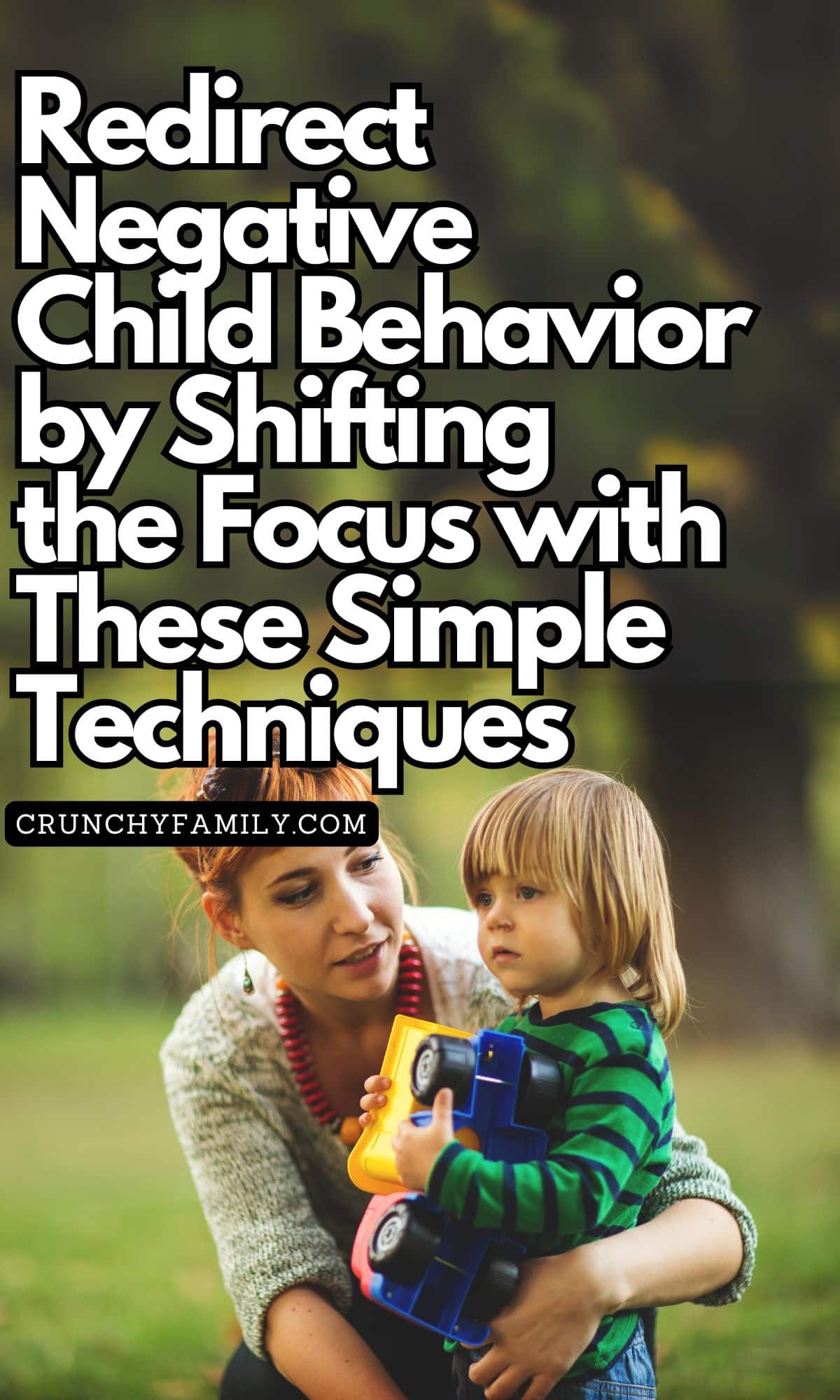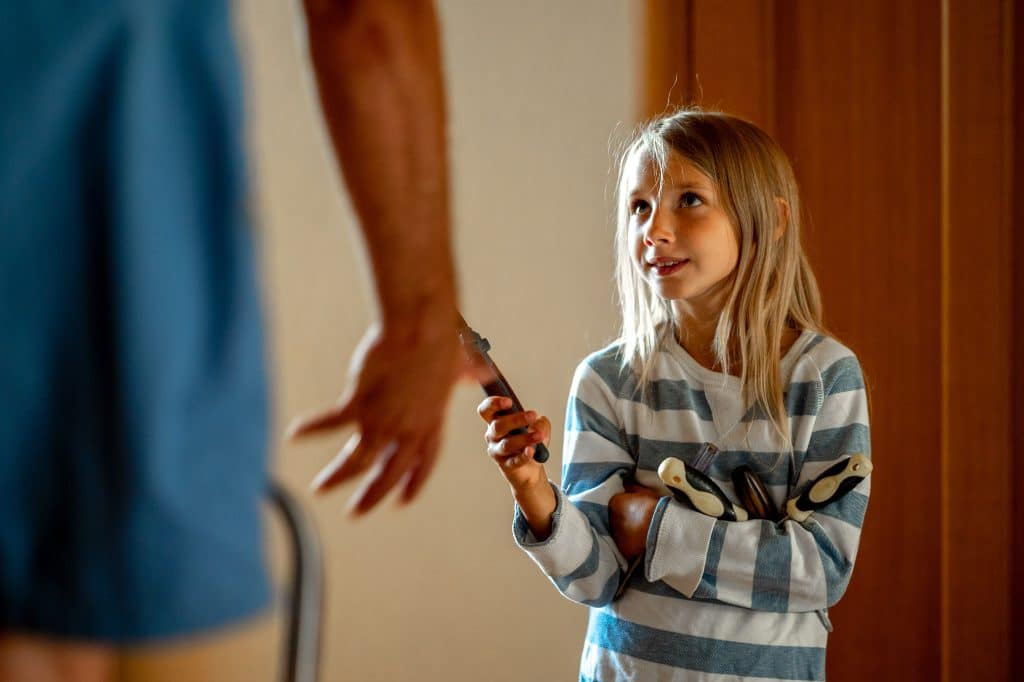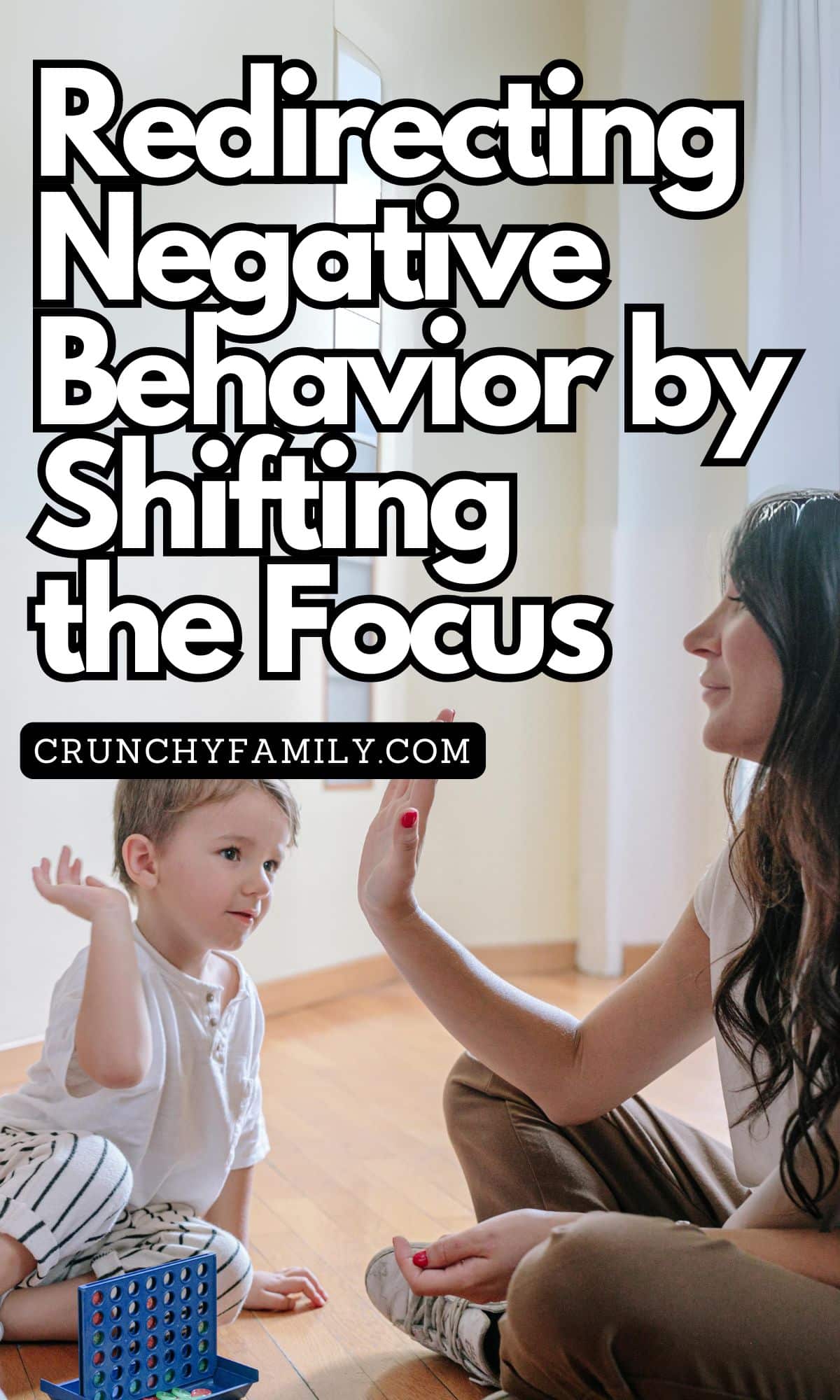When it comes to managing young children’s behavior, it can sometimes feel like you’re stuck in a cycle of power struggles and unwanted behavior. But what if we shift the focus from punishing problem behavior to encouraging positive behavior?
Positive reinforcement, rather than relying on negative reinforcement or corporal punishment, is key to creating a more peaceful environment.
Let’s explore how you can guide a child’s attention toward better choices and desired outcomes using this approach.

Redirecting your child’s behavior by shifting the focus can be a game changer and takes the tension and conflict out of a charged situation, giving space for you to reconnect with your child and break this toxic cycle of negative behaviour and punishment.
Understanding Negative Behavior in Children
Before we can focus on positive reinforcement, it’s important to understand why children act out. Young children often exhibit negative behavior when they’re feeling overwhelmed, tired, or seeking attention.
Identifying the underlying causes and patterns of inappropriate behavior helps you anticipate and address the triggers behind these big feelings.

Sometimes, these triggers are as simple as hunger, tiredness, or overstimulation. Understanding that young children are still learning how to navigate the world around them can help you approach their unwanted behavior with empathy.
By recognizing these underlying causes, you can shift your focus from reacting in the moment to preventing the problem behavior before it escalates. For instance, if you notice a pattern of meltdowns during transition times, offering a simple instruction or giving a visual cue like a countdown clock may help ease their anxiety and guide them toward a positive action.
Instead of simply reacting, you can take a deep breath and respond in a more intentional way.
When we use negative reinforcement or punishment, children’s behavior might change temporarily, but it doesn’t teach them better ways to handle their emotions. This is where positive reinforcement comes in as a more effective strategy to guide your child toward positive actions.
Positive Reinforcement Techniques
One of the simplest yet most powerful ways to encourage more appropriate behavior is by praising desired behavior. When your child listens to a simple instruction or follows a classroom rule, be sure to give specific and timely feedback.
A genuine “I love how you kept your hands to yourself during circle time!” goes a long way in reinforcing positive behaviors. Celebrating even small achievements can help your child feel proud and motivated.
Rewards and incentives can also be part of your strategy. Choosing appropriate rewards like extra story time or a special activity can make a big impact. Be consistent with your reward system, but don’t forget that non-material rewards, like a gentle touch or quality time together, can be just as effective in reinforcing good behavior.
Children thrive on attention, and by providing positive attention, like active listening or spending time at your child’s level, you’re showing them that they matter, encouraging them to repeat their positive behaviors.

Proximal attention is a great tool to use when reinforcing positive behavior. This means staying close to your child when they are engaging in appropriate behavior and offering positive reinforcement in the moment.
For example, when your child is playing calmly with their toys, sitting nearby and offering encouragement like, “I love how you’re playing so gently with your toys!” helps them associate good behavior with your attention. This reinforces the idea that they don’t need to engage in negative behavior to get your focus.
Shifting Attention Away from Negative Behavior
When your child is struggling with aggressive behavior or other unwanted behavior, redirection techniques are key to shifting their focus to better choices. Instead of reacting to the negative behavior, distract them with a new activity or provide choices that lead to positive outcomes.
Giving children a sense of control in difficult situations can also work wonders. When a child is having a hard time following directions or is acting out, offering them choices helps shift the power dynamic.

For instance, instead of saying, “Stop running around,” try offering a choice like, “Would you like to walk or skip to the next room?” This type of redirection not only moves their attention away from negative behavior but also gives them a sense of agency in a positive way. The key is to offer choices that lead to desired outcomes while making the child feel empowered.
For example, offering a different way to complete a task or suggesting a new activity like playing with sensory materials or a shiny car can successfully redirect the child’s hands away from an inappropriate action.
Reinforcing positive alternatives by teaching simple cues or strategies, like taking a deep breath or using a comfort corner for a break, helps them learn how to deal with challenging behavior. You can model positive behavior and give them a visual cue or a gentle touch to remind them to make safer alternatives.
Creating a Positive Environment
Establishing clear expectations is crucial in promoting positive behavior. Consistency with rules and consequences—whether at home or in the classroom—helps children understand what’s expected.
Incorporating visual cues around the house or classroom can also reinforce positive behavior.

For instance, using visual charts with simple instructions, like a daily routine checklist or visual reminders of classroom rules, helps young children remember what’s expected of them. These simple cues are a great way to guide children when verbal instructions may not always be enough.
The use of visual aids is especially helpful for kids who struggle with transitions or have a hard time following multiple-step directions.
When rules are paired with a nurturing atmosphere and a focus on successful redirection, children feel supported.
Great teachers and caregivers use classroom expectations, clear visual cues, and redirection to help children make better choices, creating an environment where they can thrive.
Addressing Challenges with Children’s Behavior
Of course, there are times when children resist positive reinforcement, and that’s okay. Setbacks and relapses are normal, and they offer a teachable moment to try a new strategy.

It’s also important to recognize that some children may need a comfort corner or calming space to help them reset during challenging moments.
These spaces, filled with soft cushions, calming objects, and perhaps a favorite book or toy, provide children with a positive alternative when they are overwhelmed.
Encouraging children to use this space when they’re feeling frustrated offers them a different way to cope with big feelings, rather than acting out in an aggressive behavior. Over time, they’ll start to see this as a tool to manage their emotions and make better choices.
If a child continues to struggle, don’t hesitate to seek additional support from an international network of professionals or your community. There are always better ways to approach challenging behavior.
Empowering Parents and Caregivers in Positive Discipline and Redirection
Positive reinforcement not only improves children’s behavior but also strengthens relationships. Providing tools and techniques for positive behavior management, like teaching redirection and using rewards, empowers you to manage difficult moments with more confidence.
And while it’s not always easy, a little patience and persistence go a long way in building a growth mindset that helps your child make better choices.
By shifting the focus away from negative behavior and power struggles, and emphasizing positive reinforcement, we create a positive way to guide children toward desired outcomes.

Encouraging children to express their emotions in a safer and more appropriate way not only improves their behavior but also helps them develop skills for life.
Start incorporating these techniques today, and watch as your child begins to make better choices in a positive and nurturing environment!
More Positive Parenting Strategies
- What Is The Balanced Parenting Approach?
- Setting Boundaries in Gentle Parenting
- How to Teach Kids Gratitude (Without Losing Your Patience)
- Natural Ways to Reduce Anxiety In Children
- 11 Fun And Easy Breathing Exercises for Children
- 5 Effective Emotional Regulation Strategies to Use With Kids
- 6 Gentle Parenting Alternatives to Time Out
If you found these strategies helpful, please share the love and share with another parent too! And don’t forget, you can subscribe to Crunchy Family via email to receive more blog posts in your inbox.
